Seven Questions Over Breakfast with Jennifer K. Mann
 June 28th, 2016 by jules
June 28th, 2016 by jules
 When I read Two Speckled Eggs in 2014, Jennifer K. Mann’s debut as both author and illustrator, I knew I’d found an author-illustrator whose books I’d want to keep an eye on. This book (and Jennifer’s next two books) was right in touch, and authentically so, with the topsy-turvy, always intense feelings of young children. In Two Speckled Eggs, Mann addresses the drama that can be a young girl’s birthday party — issues of inclusion, individuality, and (as the Publisher Weekly review notes) “geek pride.” And in last year’s I Will Never Get a Star on Mrs. Benson’s Blackboard, she sensitively addresses teacher-student dynamics and the vulnerabilities of children in the care of adults in a classroom. This year’s Sam and Jump, released in May, is a tender story of loyalties forged and friendship found.
When I read Two Speckled Eggs in 2014, Jennifer K. Mann’s debut as both author and illustrator, I knew I’d found an author-illustrator whose books I’d want to keep an eye on. This book (and Jennifer’s next two books) was right in touch, and authentically so, with the topsy-turvy, always intense feelings of young children. In Two Speckled Eggs, Mann addresses the drama that can be a young girl’s birthday party — issues of inclusion, individuality, and (as the Publisher Weekly review notes) “geek pride.” And in last year’s I Will Never Get a Star on Mrs. Benson’s Blackboard, she sensitively addresses teacher-student dynamics and the vulnerabilities of children in the care of adults in a classroom. This year’s Sam and Jump, released in May, is a tender story of loyalties forged and friendship found.
I invited Jennifer over for a cyber-breakfast to hear more about her work and see a bit more art. Her favorite breakfast is toast, spread with a little chipotle puree, mashed avocado, a fried egg, and a little sea salt. (This sounds so good to me that right about now I am wishing this were a real breakfast.)
Let’s get the basics from her while I set the table for breakfast. I thank her for visiting.
Jules: Are you an illustrator or author/illustrator?
(Click to enlarge spread)
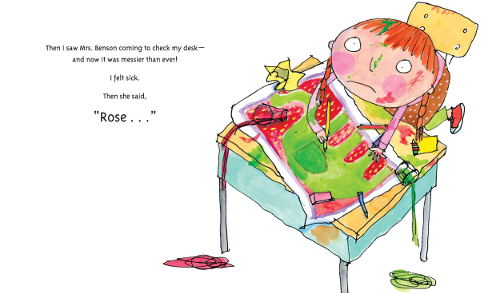
messier than ever! I felt sick. Then she said, ‘Rose …'”
(Click to enlarge spread)
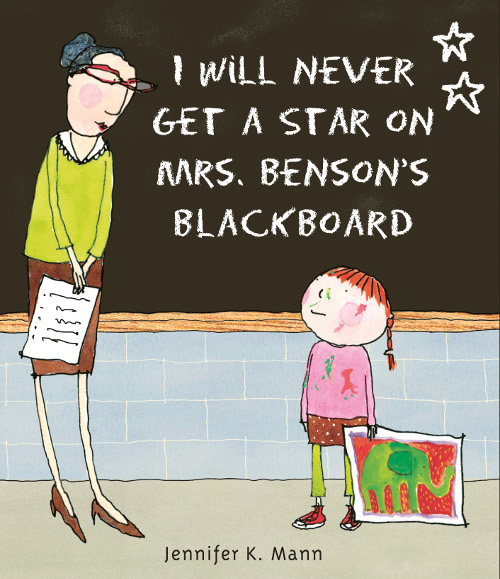
I Will Never Get a Star on Mrs. Benson’s Blackboard
(Candlewick, 2015)
Jules: Can you list your books-to-date?
Jennifer: Turkey Tot, written by George Shannon and illustrated by me; Two Speckled Eggs; I Will Never Get a Star on Mrs. Benson’s Blackboard; Sam and Jump (the last ones all written and illustrated by me).
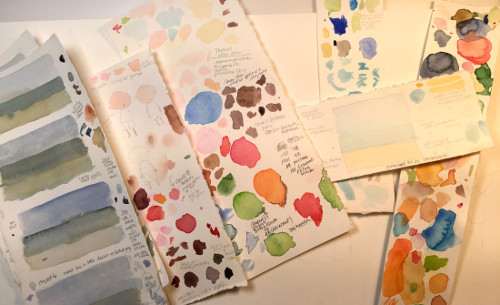
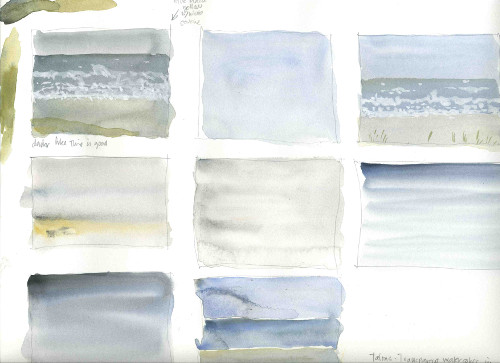
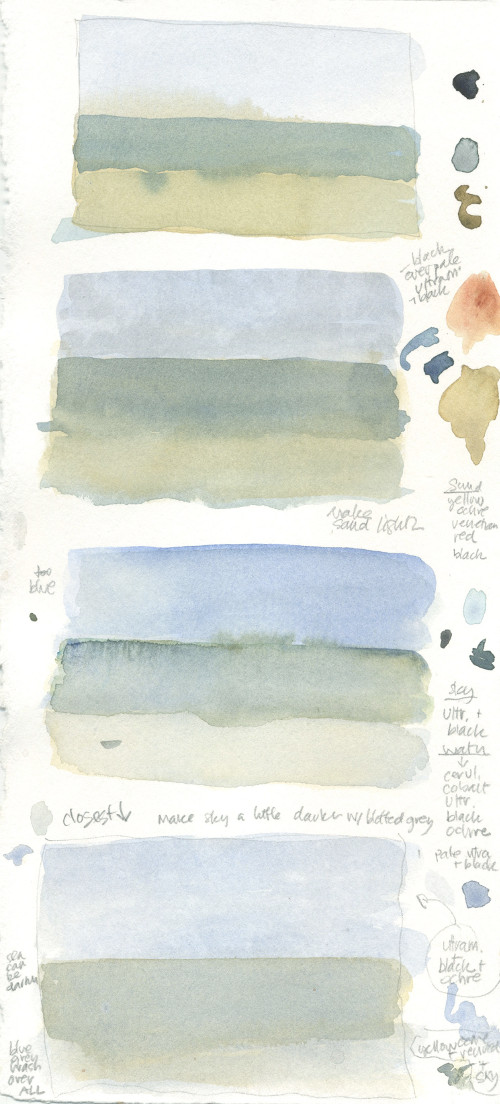
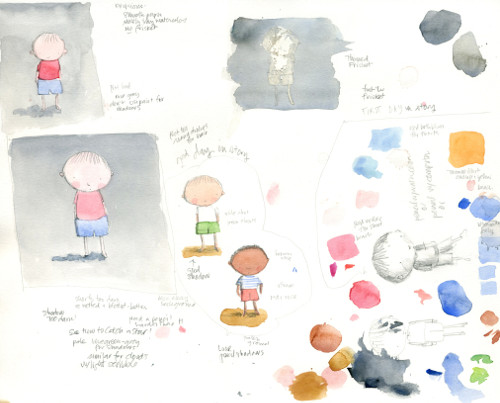
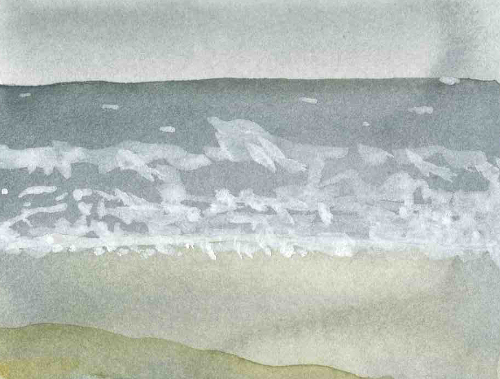
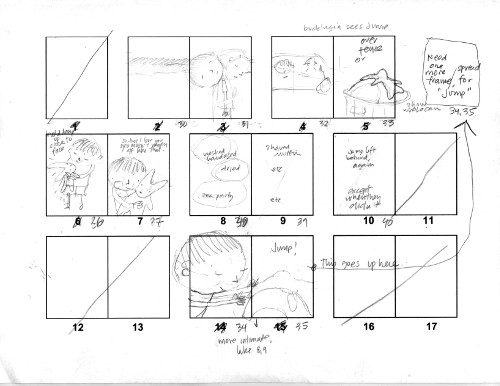

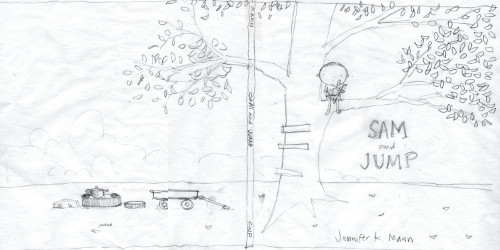
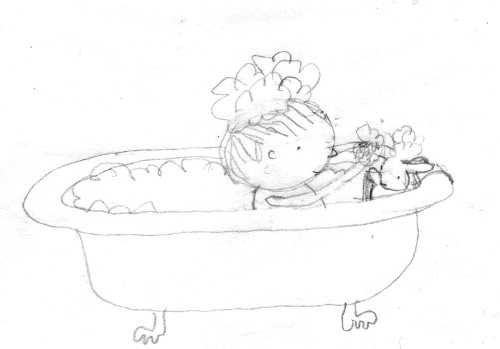
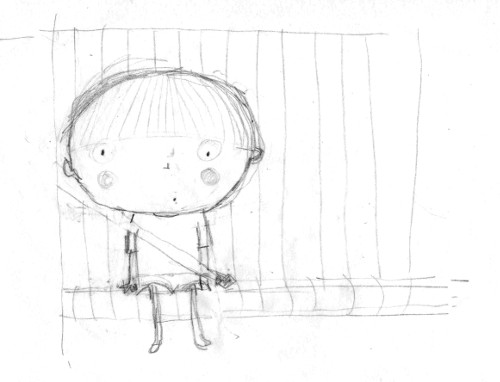


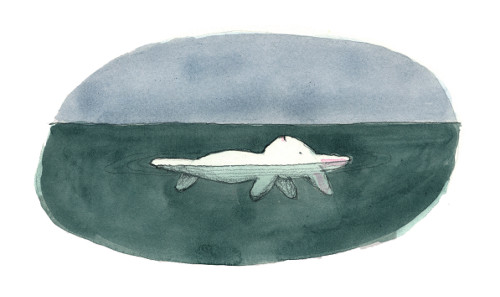
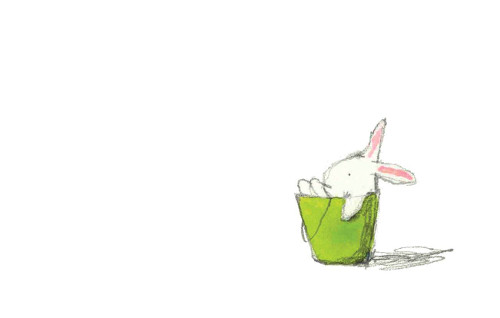
(you can click most to enlarge)
Jules: What is your usual medium?
Jennifer: I love to draw with a pencil or a pen, so my illustrations always start with that. Then I paint with gouache or watercolor. Sometimes I scan and collage my painted elements with background textures in Photoshop, as in Two Speckled Eggs and I Will Never Get a Star on Mrs. Benson’s Blackboard. Sometimes I just draw and paint traditionally, as in Sam and Jump [pictured below].

(Click to enlarge spread)
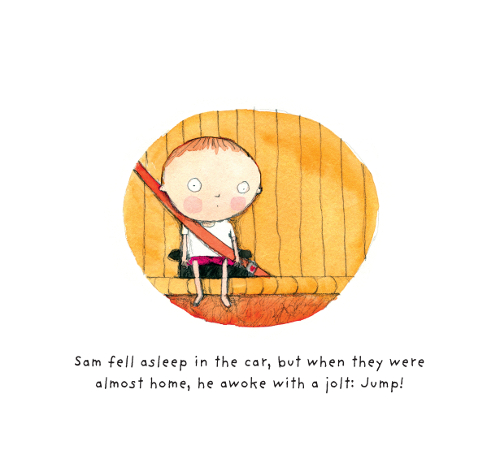

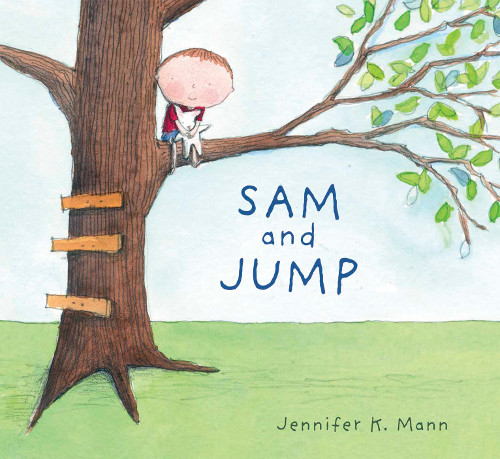
Jules: Where are your stompin’ grounds?
Jennifer: I live on Bainbridge Island, a 35-minute ferry ride from Seattle. It is one of the prettiest places on earth, with views across water to the Olympic Range and the Cascade Range, as well as to Mount Rainier and Mount Baker.
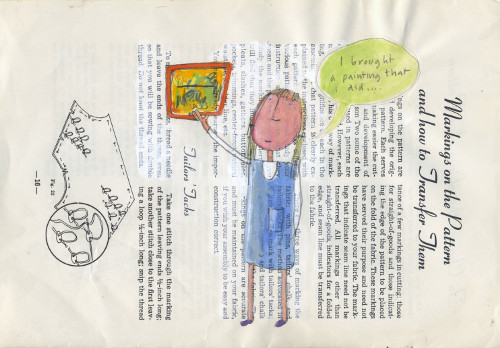
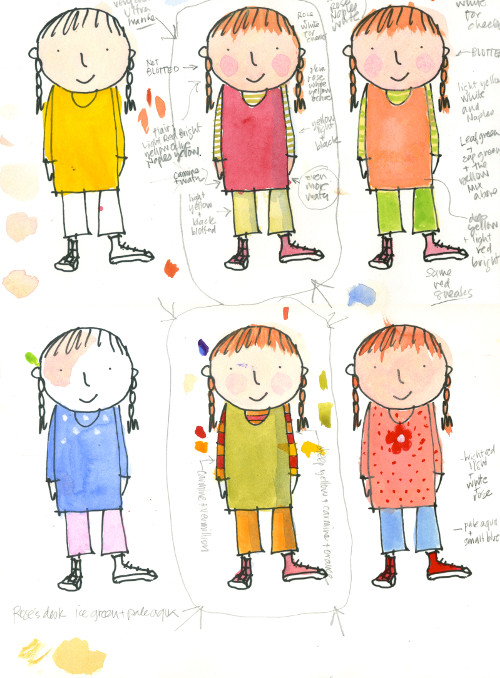
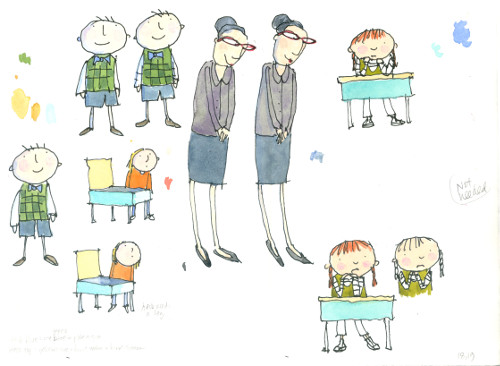
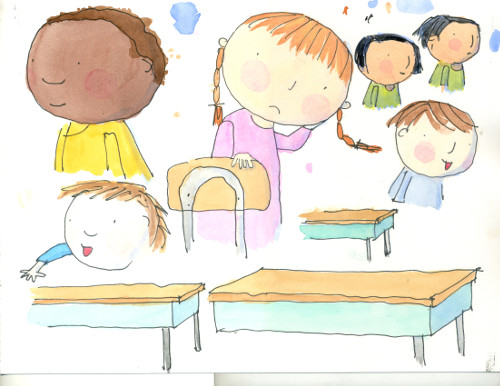
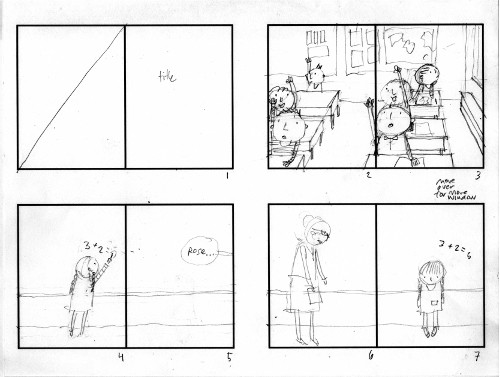
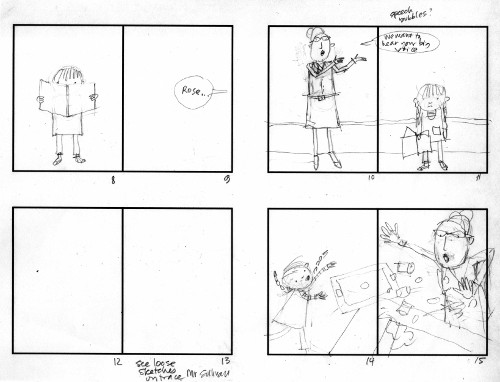
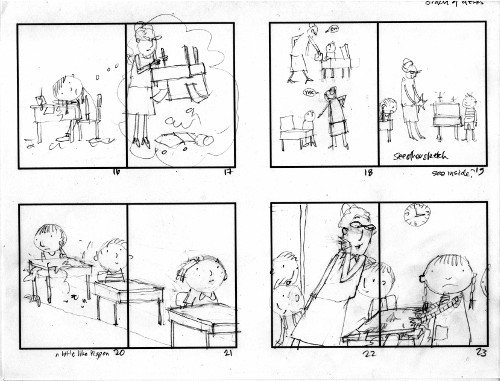
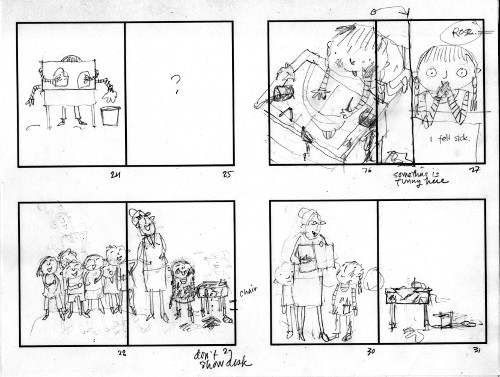
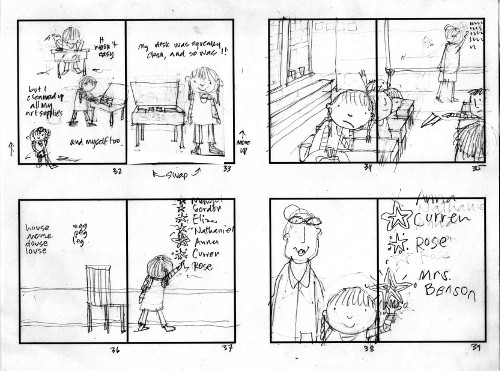
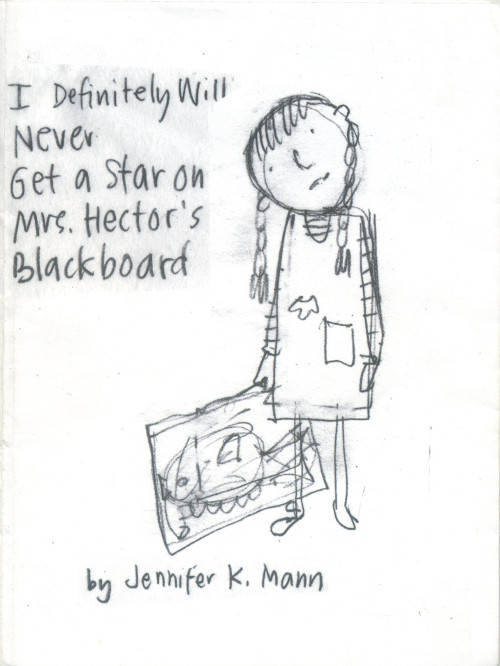
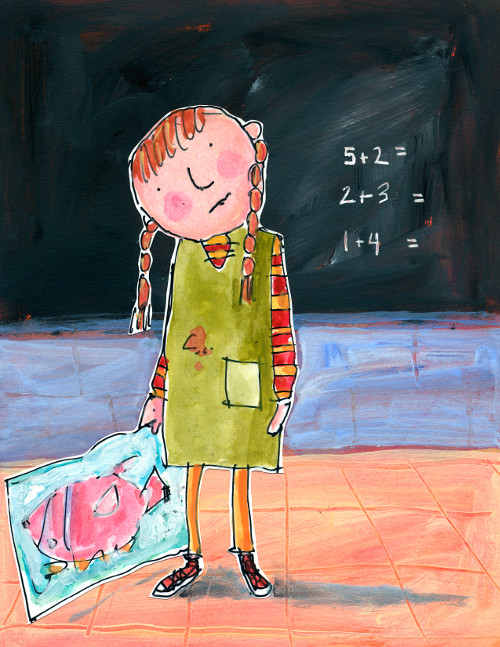
(Click each to enlarge)
Jules: Can you briefly tell me about your road to publication?
Jennifer: There is nothing brief about my road to publication! It was long and arduous — and totally worth every minute. When I realized I loved to draw more than anything, I went to grad school to become an architect. (That is really the long way to publication as a children’s book author/illustrator!) But after working as an architect for many years, I had a couple of kids, and I read lots of picture books to them. That’s when it dawned on me that there was another sort of drawing that was incredibly inspiring to me. So I set about learning how to write and illustrate picture books. Seven years, a couple of night classes, a few conferences, and many rejections and a few awards later, I got my first offer on a book of my own. I had put a book dummy in my portfolio and went to the SCBWI conference in New York, where an editor saw it and made me an offer. That offer made it possible for me to find my agent, Holly McGhee of Pippin Properties, and the rest is history (albeit still a slightly long and even more drawn-out history).
Jules: Can you please point readers to your web site and/or blog?
Jennifer: www.jenniferkmann.com.

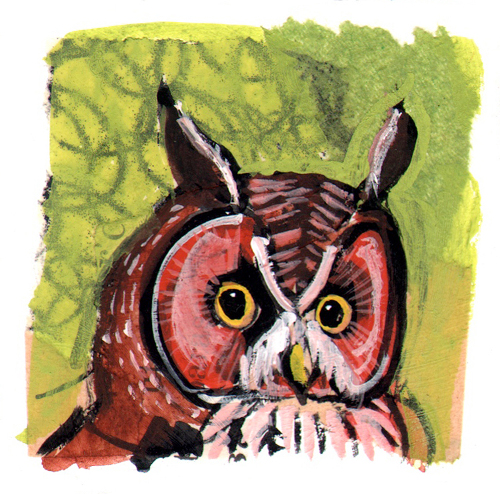
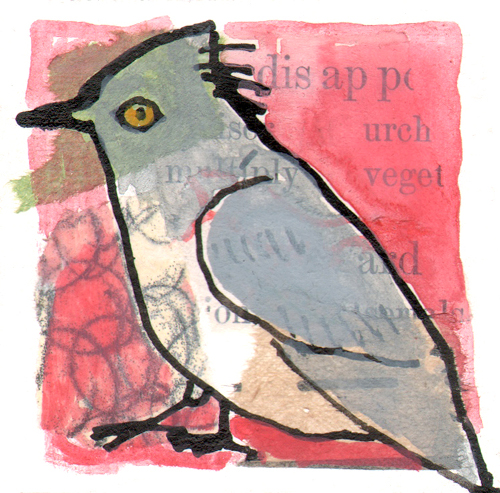
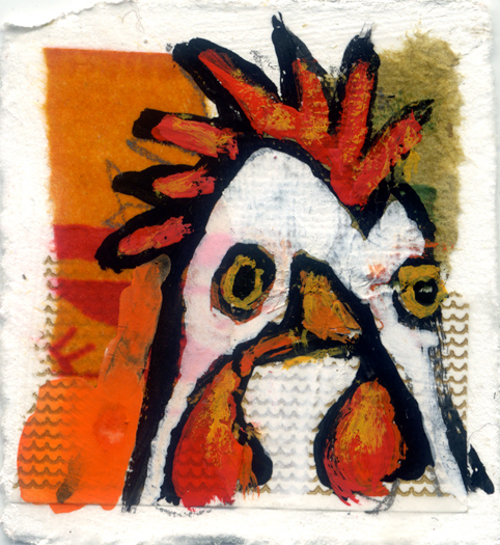
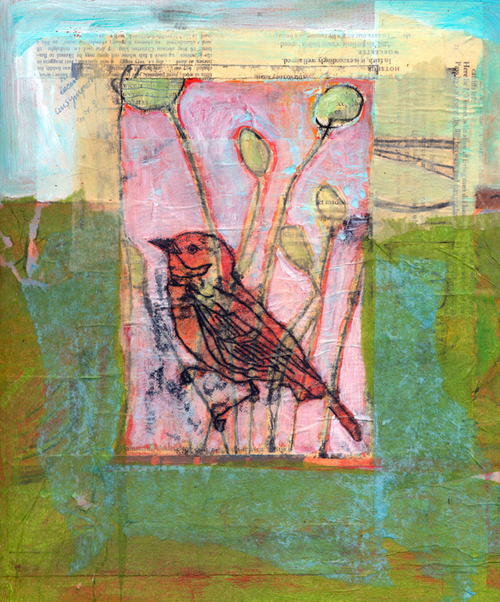
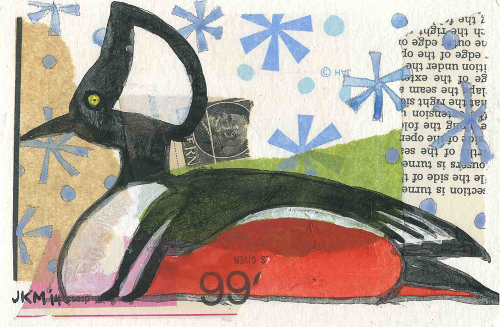

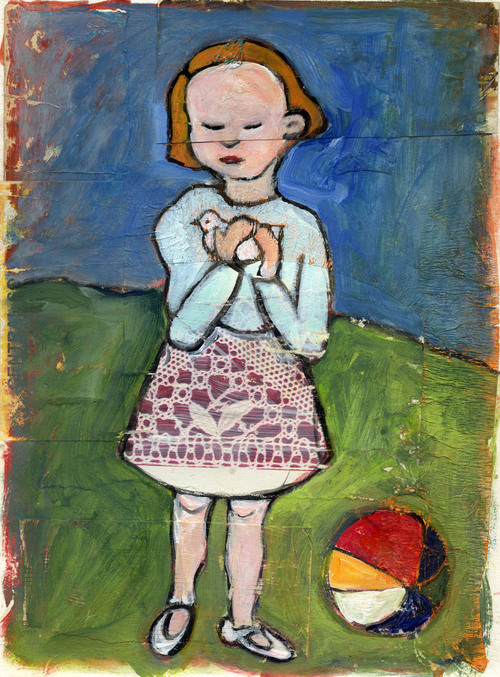
Jules: If you do school visits, tell me what they’re like.
Jennifer: I love school visits! I have a lot to say about books and ideas and where I get my ideas, so mostly I show the kids a slideshow and tell them about my life as a kid and as an adult (parent), which is where most of my ideas come from. They always have the best questions, so I spend a lot of time on that too.
Jules: Any new titles/projects you might be working on now that you can tell me about?
Jennifer: I am currently illustrating a book written by Alison McGhee, called Percy: Dog of Destiny. It’s an all-dog romp in the (dog) park.
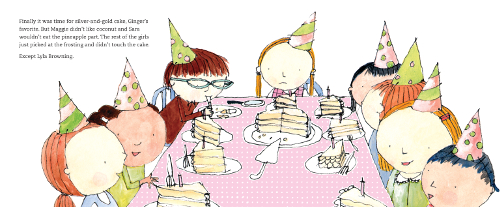
(Click to enlarge spread)
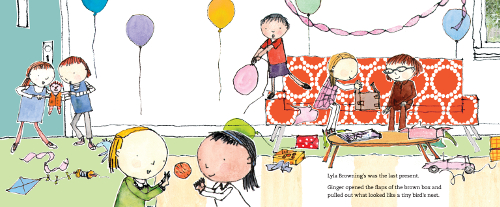
(Click to enlarge spread)

Two Speckled Eggs (Candlewick, 2014)
 Okay, we’ve got our coffee and toast, and it’s time to get a bit more detailed with seven questions over breakfast. I thank Jennifer again for visiting 7-Imp.
Okay, we’ve got our coffee and toast, and it’s time to get a bit more detailed with seven questions over breakfast. I thank Jennifer again for visiting 7-Imp.
1. Jules: What exactly is your process when you are illustrating a book? You can start wherever you’d like when answering: getting initial ideas, starting to illustrate, or even what it’s like under deadline, etc. Do you outline a great deal of the book before you illustrate or just let your muse lead you on and see where you end up?
Jennifer: I have learned from preparing for this interview that I don’t really have one set process. It seems I do it quite differently for each book.

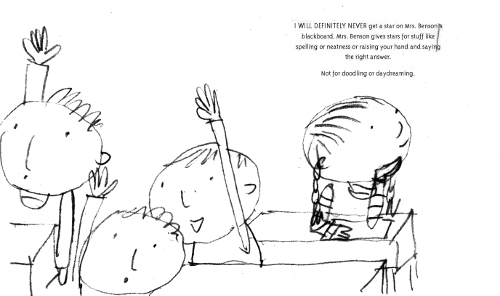
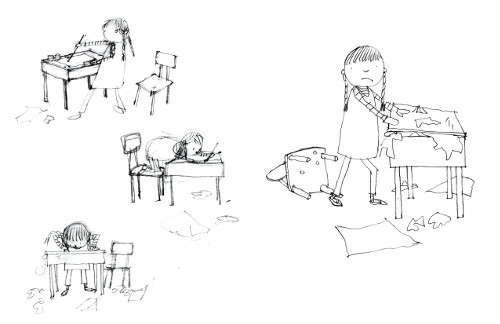

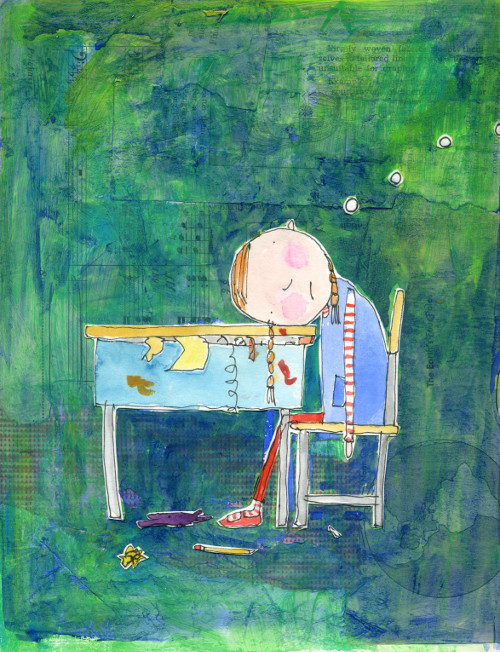
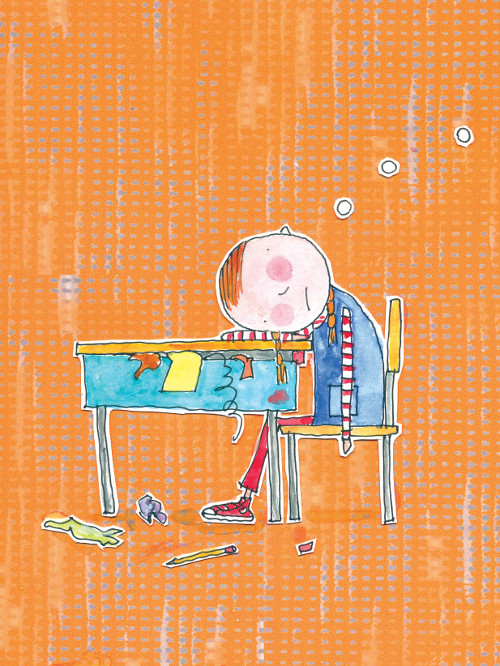
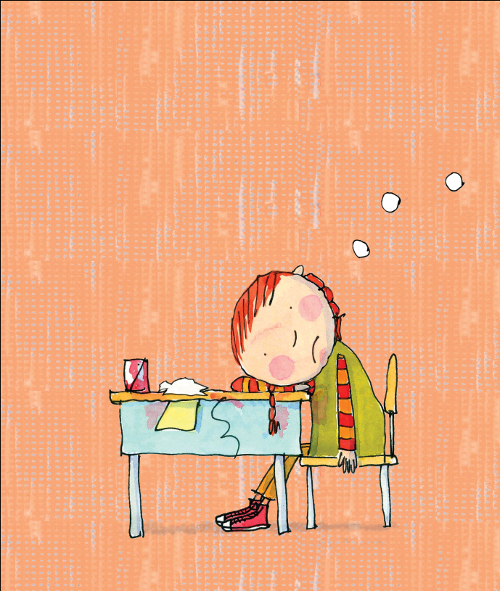
I Will Never Get a Star on Mrs. Benson’s Blackboard
(Click each to enlarge)
But in general, when I am working on one of my own books, I often start with a random sketch of the character that comes to mind when I am thinking of the germ of a story. The character in the final illustrations may not wind up looking exactly like that initial sketch, but starting with a visual for the main character allows me to imagine the character as a real somebody, having real experiences. Then I work out the story as text. Once I have a story that seems to have a good narrative arc and a reasonably satisfying ending, I start to draw moments from the story, vignettes. I work hard to make it feel complete, emotional, and read-worthy, and then I send it to my agent for feedback. She gives excellent editorial advice, and if I’ve made sure we both are satisfied, it goes off to my editor. Then, when the book is really underway, I sometimes jump into thumbnails of the entire book. “Thumbnails” is a bit of a misnomer, because often the thumbnails are actually full size. I have to jump back and forth in scale, because for me it’s not just about the character doing their thing, but also how the character is interacting with the frame of the page, and it’s hard to see that interaction in a thumbnail. So, although it’s important for me to understand the whole book early on, it also feels important to understand how I’m going to show the action or the emotion on any given spread — and the composition is a big part of that. The composition (and the choice of medium and technique) is as much a character as the character — and the setting.
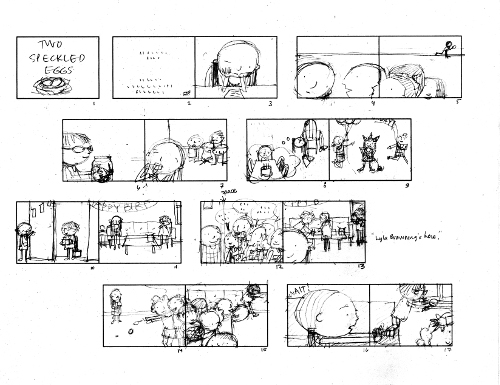
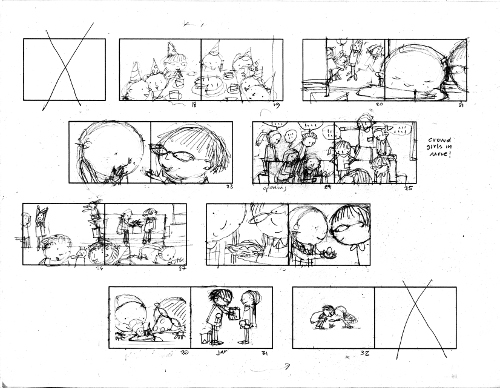
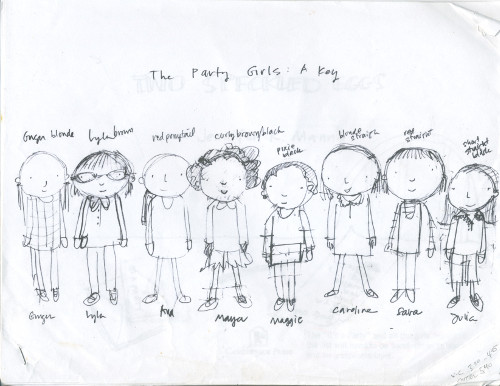
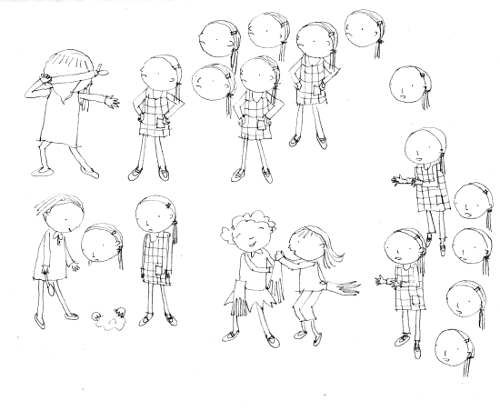
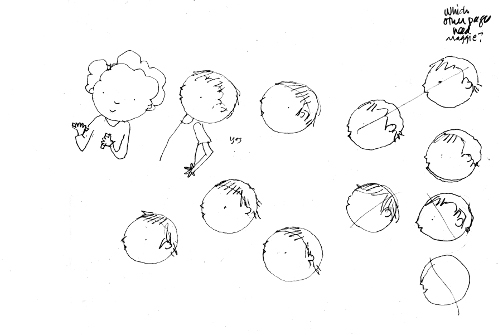
for Two Speckled Eggs
(Click each to enlarge)
Then, as I jump back and forth between scales, I am ultimately building the sketch dummy for the entire book. Sometimes my dummies are very messy and glued and taped and stapled together. Sometimes they are composed of pretty complete sketches that I have formatted in InDesign. When I think I have it in reasonably good shape, I send it off to my editor/designer for feedback. Then I try to use the down time to experiment with the final art. I am not at all married to one particular medium. Rather, I am interested in using whatever medium is best for the story. I used collage and digital collage and pretty vibrant color for Two Speckled Eggs and I Will Never Get a Star on Mrs. Benson’s Blackboard. But I felt that Sam and Jump was a more tender story and required the more tender medium of pencil and water color.
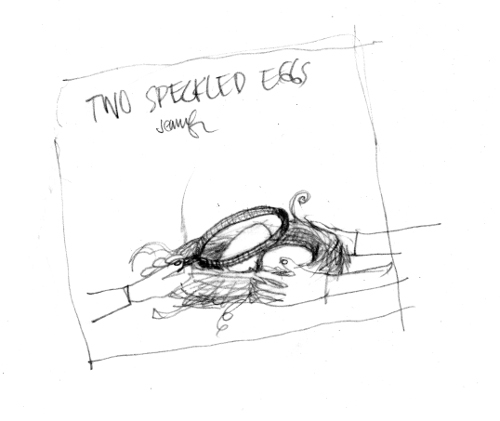
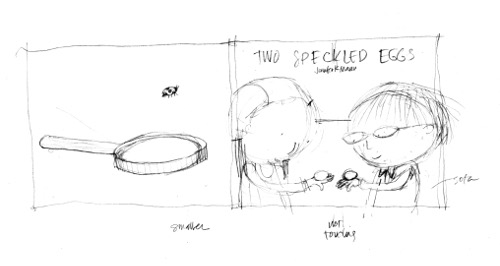

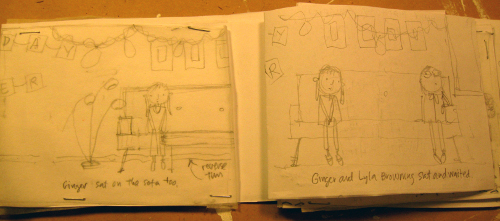
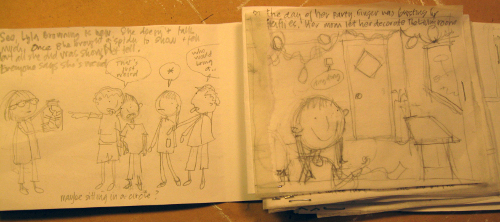
for Two Speckled Eggs
(Click each to enlarge)
So, for that book I had to teach myself traditional watercolor. And I learned as I went, and the learning curve was steep — and totally worth it. (I had the goal of becoming disciplined enough with my art to be able to send original art on paper to Candlewick, and although the art for the book is about 90% straight watercolor on paper, I did have to rely on a little bit of digital magic to pull it all off.) There is a lot of emotion in Sam and Jump, and as I look back over my sketches and studies, I feel it all there too.
It interests me a great deal to leave evidence of my process in the final art. I love art that shows evidence of the artist’s hand — clues to the creation of the work. I like to see the ghost lines and the erasures and the paint-overs and the splices — that seems to be where the soul of the artwork resides. So I try to let a lot of that stuff remain in my work, whether it’s finished digitally or traditionally. I work hard to stay loose — by allowing the imperfections to remain, or even sometimes using techniques that deliberately cause imperfections (as in doing final line work at 50% scale and then blowing it up to 100% scale and printing it on watercolor paper before painting it, as I did for Two Speckled Eggs and I Will Never Get a Star on Mrs. Benson’s Blackboard).
I definitely do some of my best work under the influence of adrenalin, so sometimes some really sweet stuff shows up at the very last minute before a deadline — can’t be too precious about anything when there are just two hours to countdown. I don’t recommend this as a way to do consistently good work, but I can’t deny that pressure is sometimes required to liberate the muse.
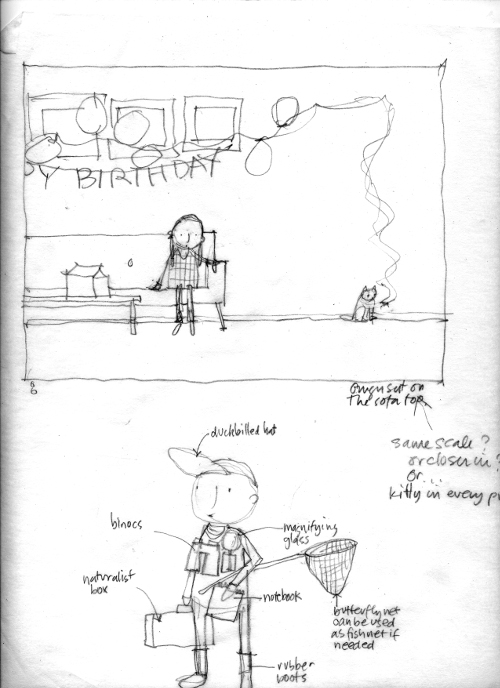
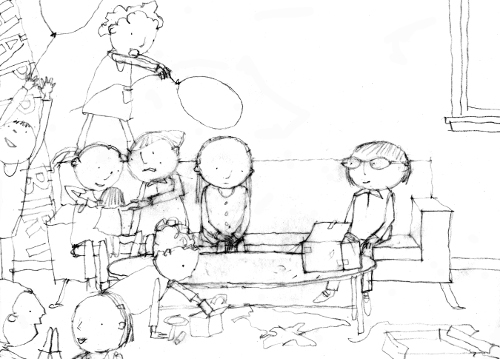
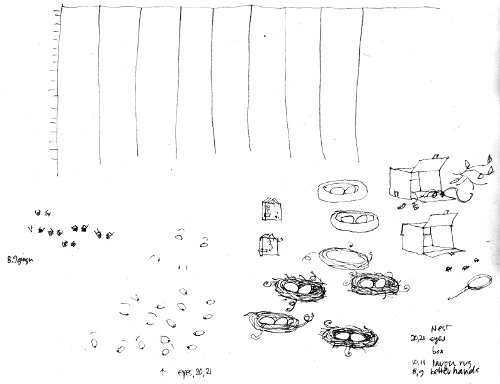
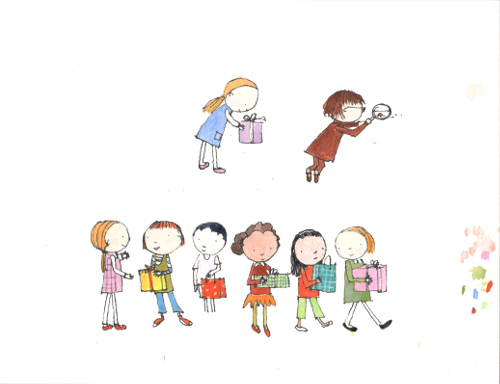
for Two Speckled Eggs
(Click each to enlarge)
2. Jules: Describe your studio or usual work space.
Jennifer: I would describe my studio as a grotto. It’s actually the back third of my garage, separated from the garage mess with a wall and a door. But one entire side of it is dug into a hillside, and the rest has small high windows that don’t let in nearly enough light, which is why I call it The Grotto. I am not the tidiest person, so it’s a little messy (sometimes a lot messy). But the best thing is it’s all mine, and I don’t have to tidy it up at the end of the day so that we can eat dinner on the table, or so that my kids won’t do their homework on top of my final art. The worst thing is that I have run out of room for storing my expanding collection of beautiful picture books. The back door of my studio looks out on my backyard, where my chickens are usually pecking around in the grass. Often my dog joins me in my studio — especially in the summer, because the concrete floor is nice and cool.

Creative chaos, I guess!”
(Click to enlarge)
3. Jules: As a book-lover, it interests me: What books or authors and/or illustrators influenced you as an early reader?
Jennifer: It’s funny — I have a pretty sketchy memory of the books I read as a child. I was the last of five kids, so I think my parents were possibly done with lap-reading by the time I came along. I do remember really loving Richard Scarry, all Richard Scarry, and spending hours poring over his wonderfully detailed illustrations. I also really loved all of the Dr. Seuss/I Can Read Books, like Hop on Pop; Go, Dog. Go!; and Sam and the Firelfly, as well as the Maurice Sendak Nutshell Library books. And, of course, Where the Wild Things Are.
When I was a little older, I loved Harriet the Spy and even did a little neighborhood spying of my own — and then moved on to The Chronicles of Narnia and Susan Cooper novels.
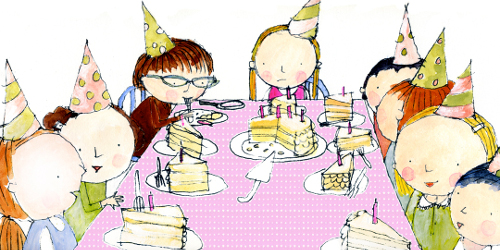
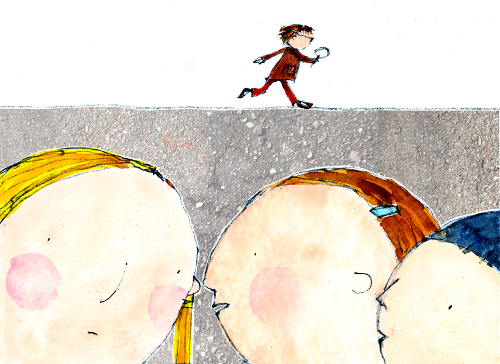

Two Speckled Eggs
(Click each to enlarge)
4. Jules: If you could have three (living) authors or illustrators—whom you have not yet met—over for coffee or a glass of rich, red wine, whom would you choose? (Some people cheat and list deceased authors/illustrators. I won’t tell.)
Jennifer: John Burningham, Marianne Dubuc, Isabelle Arsenault.
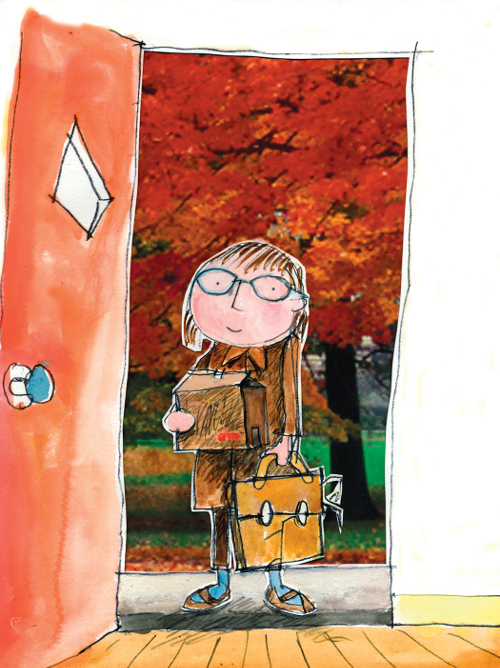
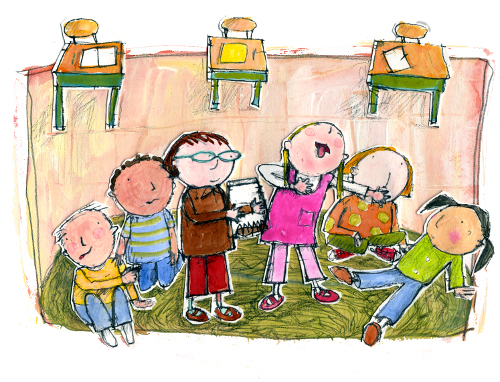
Two Speckled Eggs
(Click each to enlarge)
5. Jules: What is currently in rotation on your iPod or loaded in your CD player? Do you listen to music while you create books?
Jennifer: When I am writing, I can’t listen to anything; I really need quiet.Silence would be best but is not attainable here.(I live in a busy neighborhood on the edge of the most urban part of Bainbridge Island.) When I am working out illustrations, I almost can’t listen to anything, but sometimes I can take a little Nico Muhly or some Rostopovich.
But when I am in production mode, during the work day hours I listen to KEXP, a really wonderful all-music public radio station right here in Seattle. I love the music they curate, and I feel so much less isolated hearing their voices talking about emerging music and interviewing outstanding musicians. I prefer it to lining music up on iTunes. If you ever come to Seattle, you should definitely check out their new home at Seattle Center. It’s a wonderful community gathering place all about incredible music and musicians.
 Sam's terrible dreamsmall.jpg)
 mama carrying pip077small.jpg)
 mending jumpsmall.jpg)
 pining chickensmall.jpg)
 Pining w_chickensmall.jpg)
tending to jumpsmall.jpg)
(Click each to enlarge)
6. Jules: What’s one thing that most people don’t know about you?
Jennifer: Hmmm. I got an F in Algebra in 8th grade. My parents weren’t even mad. I just took it again in 9th grade. I had told myself some sort of story that I was terrible at math. But it turns out I’m okay at math, and I even waded through self-paced Calculus after college, because it was required to study architecture as a grad student, which I did. I kind of liked Calculus.
7. Jules: Is there something you wish interviewers would ask you — but never do? Feel free to ask and respond here.
Jennifer: Nah. All the good questions are right here.

Jules: What is your favorite word?
Jennifer: “Cake.”
Jules: What is your least favorite word?
Jennifer: Although I use it just as often as the next gal or guy, I am generally against the word “cute.”
Jules: What turns you on creatively, spiritually or emotionally?
Jennifer: I am easily moved by simple, small beauty, like the tiniest seedling pushing through the forest humus in the early spring.
Jules: What turns you off?
Jennifer: Intolerance.
Jules: What is your favorite curse word? (optional)
Jennifer: “Fuck.”
Jules: What sound or noise do you love?
Jennifer: The sound of the birds that sing loudly just before and during sunrise.
Jules: What sound or noise do you hate?
Jennifer: Generators. The power goes out pretty often here, which I love. But the recent advent of the sound of generators in the neighborhood totally ruins the rare silence of a power outage.
Jules: What profession other than your own would you like to attempt?
Jennifer: Filmmaking.
Jules: What profession would you not like to do?
Jennifer: I would not want to be among the people who have to clean up the awful things that happen in public places.
Jules: If Heaven exists, what would you like to hear God say when you arrive at the Pearly Gates?
Jennifer: “Your breakfast will be served at 8, coffee and cardamon rolls at 10, lunch at noon, tea and cookies at 2, supper at 6. Leave your dirty laundry on the porch — it will be returned, clean and folded, the following day.”
I WILL NEVER GET A STAR ON MRS. BENSON’S BLACKBOARD. Copyright © 2015 by Jennifer K. Mann. Reproduced by permission of the publisher, Candlewick Press, Somerville, MA.
SAM AND JUMP. Illustrations copyright © 2016 by Jennifer K. Mann. Reproduced by permission of the publisher, Candlewick Press, Somerville, MA.
TWO SPECKLED EGGS. Copyright © 2014 by Jennifer K. Mann. Reproduced by permission of the publisher, Candlewick Press, Somerville, MA.
All other images are used by permission of Jennifer K. Mann.
The spiffy and slightly sinister gentleman introducing the Pivot Questionnaire is Alfred, copyright © 2009 Matt Phelan.
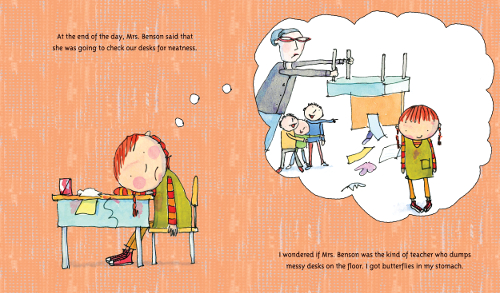

Amazon Prime carries this streaming-only show which I think of as “the ‘New Yorker’ channel.” Each episode is structured kinda like the magazine itself is; there are a couple of mini-documentaries along the lines of The Talk of the Town pieces, maybe a short story acted out as a play, and so on. The “word-y” bits are broken up by wordless visits with NYer cartoonists in the process of creating cartoons which (I think) later appear in the magazine.
And I *love* watching the cartoonists at work. The producers use speeded-up video for these segments: the cartoonist starts with a blank sheet of paper or tablet or computer screen, and then sketches like mad, maybe overlaying a sketch with tracing paper, and proceeding to the finished wash-over-line drawing.
When I read this comment from Jennifer Mann, I thought of that show immediately: “I love art that shows evidence of the artist’s hand — clues to the creation of the work. I like to see the ghost lines and the erasures and the paint-overs and the splices — that seems to be where the soul of the artwork resides.”
YES. Not that artists and illustrators who go the plain-old unshaded line-drawing route are any less talented or, well, “artistic,” and the cartoonists are funny as hell regardless. But when I see a work with loose edges, as it were, it feels more like the artist has established an intimacy with the viewer; they haven’t erased their idiosyncratic touches of themselves, but shared THOSE as well as the work itself.
Another classic seven-questions interview, Jules!
Wow!! What a wonderful and comprehensive interview, Jules–thank you! I loved seeing all of the spreads. I loved both Mrs. Benson & Two Speckled Eggs. Looking forward to Sam & Jump now too!
LOVE her style. And that Merganser!! Love that so much! I wonder if it’s for sale (says the bird nerd). It’s just stunning!
Fantastic interview, Jules, and Jen, well, you know how great my love and admiration is for you. But do we ever get tired of hearing that? You have genius. And sensitivity, tenderness and toughness in spades. Your style is unique, and that’s not something one can learn. It sprouts from you, like those seedlings, to inspire and woo the rest of us.
[…] The author-illustrator shares her visual storytelling process with Julie Danielson in the Seven Impo… […]